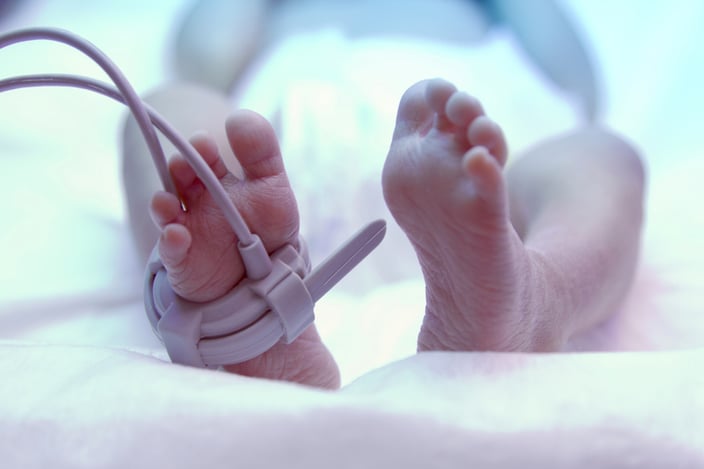
Routine suctioning at birth has been the standard of care for newborns for decades. However, evidence calls this practice into question, and many hospitals are moving away from it. But this doesn’t mean that suctioning is obsolete. Newborns in respiratory distress, those with low Apgar scores, and those struggling with the transition from fetus to newborn may still need bulb suctioning, or occasionally, suctioning with a machine. Here are five things you need to know about suctioning newborns.
Routine Suctioning Is Unnecessary
The World Health Organization advises against routine bulb suctioning of neonates in the minutes following birth. If the baby is born through clear amniotic fluid and begins breathing on their own shortly after birth, do not suction. However, if the baby struggles with signs of respiratory distress, do not delay suctioning. Aspirated meconium can be especially lethal to newborns, and the faster you are able to suction them, the greater their likelihood of survival.
Suction Only for Clear Indications
Only suction a neonate who shows clear signs that suctioning is appropriate. Those include
- An increase in CO2
- Increased oxygen needs
- Bradycardia and apnea
- Audible breathing, gasping, or wheezing
- Visible secretions, or obvious difficulty clearing the airway
- Aspiration
Monitor the baby’s vital signs before and after suctioning because no procedure is without risk. Airway trauma, hypoxia, infection, and increased intracranial pressure are especially dangerous to neonates, so weigh the risks and benefits and know the baby’s health history before proceeding.
Minimize Risk to the Newborn
As with any other patient, hyperoxygenate the neonate before and after suctioning. Minimize the length of suctioning to 10 seconds or less. If the first pass does not fully clear the airway, reoxygenate the neonate and try again. Some other strategies that can reduce risk include
- Choosing smaller equipment. Neonates have fragile airways that are easily damaged.
- Being mindful of differences in the neonate’s airway. Babies have smaller, more narrow airways, a larger tongue and epiglottis, and a shorter trachea. Adapt your technique and your equipment accordingly.
- Supporting the infant’s head. A newborn cannot support the weight of their head, increasing the risk of injury during suctioning if they are not well supported.
- Reducing the risk of infection. Pathogens that are only mildly annoying to an adult can be lethal to neonates, especially those with compromised immune systems. Thoroughly wash hands in hot water. Always wear gloves and a mask, and change gloves before changing equipment or after touching anything that might be contaminated.
Do Not Separate the Mother and Infant
A generation or two ago, it was routine to separate mothers from their infants, often for long periods, whenever the infant showed any signs of illness. We now know that separation is harmful to the health of the baby and extremely stressful to the mother. Indeed, skin-to-skin contact may improve infant health outcomes, reduce stress, and help the neonate better thermoregulate during the transition from fetus to newborn. So keep the mother and baby together if at all possible.
When performing bulb suctioning or other procedures during which holding the baby is possible, allow the mother to continue holding the baby. If she can't do so, return the baby to the mother or another caregiver as soon as any medical procedures are completed. Perform monitoring and vital signs checks while the mother holds the baby unless there are medical indications to do otherwise.
Choose the Right Equipment
The right equipment is critical for safe, effective suctioning of neonates. This includes more narrow catheters, as well as machines with reliable, consistent, adjustable suction. Neonates may need emergency suctioning in unusual locations—such as when a baby is delivered in the car or at home, or experiences respiratory distress in a hospital waiting room.
Emergency suction machines ensure you can tend to the baby wherever they are, without delaying care. For assistance selecting the ideal suction machine for your agency, download our free guide, The Ultimate Guide to Purchasing a Portable Emergency Suction Device.
Editor's Note: This blog was originally published in January 2022. It has been re-published with additional up to date content.
















